Key takeaways
- GitHub streamlines collaboration through features like branches, pull requests, and issue tracking, enhancing teamwork and reducing confusion.
- Clear commit messages and structured repositories improve project organization and make it easier to track changes and responsibilities.
- Encouraging open dialogue during code reviews fosters a positive team environment and promotes learning and skill improvement.
- Establishing early collaboration guidelines helps align efforts and reduces misunderstandings in project workflows.
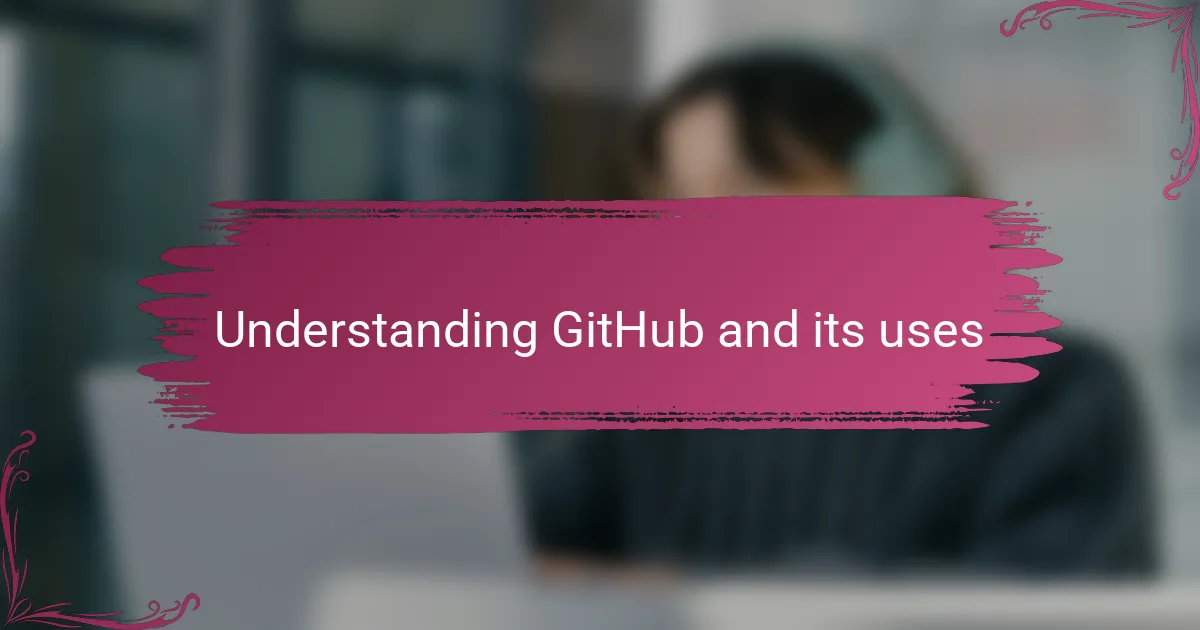
Understanding GitHub and its uses
GitHub, at its core, is a platform that hosts and manages code repositories, making it easier for developers like me to track changes and collaborate seamlessly. When I first started using it, I was amazed at how it transformed chaotic file exchanges into an organized workflow where every edit is recorded.
Have you ever struggled with merging different versions of a project? GitHub’s version control system, powered by Git, practically saved me from countless headaches by allowing me to experiment without fear of losing work. It’s like having a safety net that encourages creativity and teamwork.
Beyond just storing code, GitHub offers tools for issue tracking, project management, and discussions. These features helped me and my collaborators stay on the same page, turning what used to be scattered emails and messages into a clear, shared roadmap. It’s not just a tool—it’s the backbone of productive collaboration.

Basics of collaboration on GitHub
One of the first things I realized about collaborating on GitHub is how essential branches are. Have you ever worried about breaking the main project while trying out new ideas? Creating a separate branch gave me the freedom to experiment, knowing that the main code stayed safe until I was ready to merge my changes.
Pull requests quickly became my favorite collaboration feature. They’re like friendly code reviews where my teammates and I could discuss changes, suggest improvements, and catch mistakes early. This back-and-forth felt more like constructive conversations than tedious gatekeeping, which made the process enjoyable and educational.
I also learned the power of clear commit messages through trial and error. At first, I’d write vague notes like “fixed stuff,” which left everyone, including me, scratching their heads later. Putting a bit more thought into those small messages helped keep the history understandable and saved us time when tracking down bugs or explaining changes. It’s a small detail that truly makes collaboration smoother.
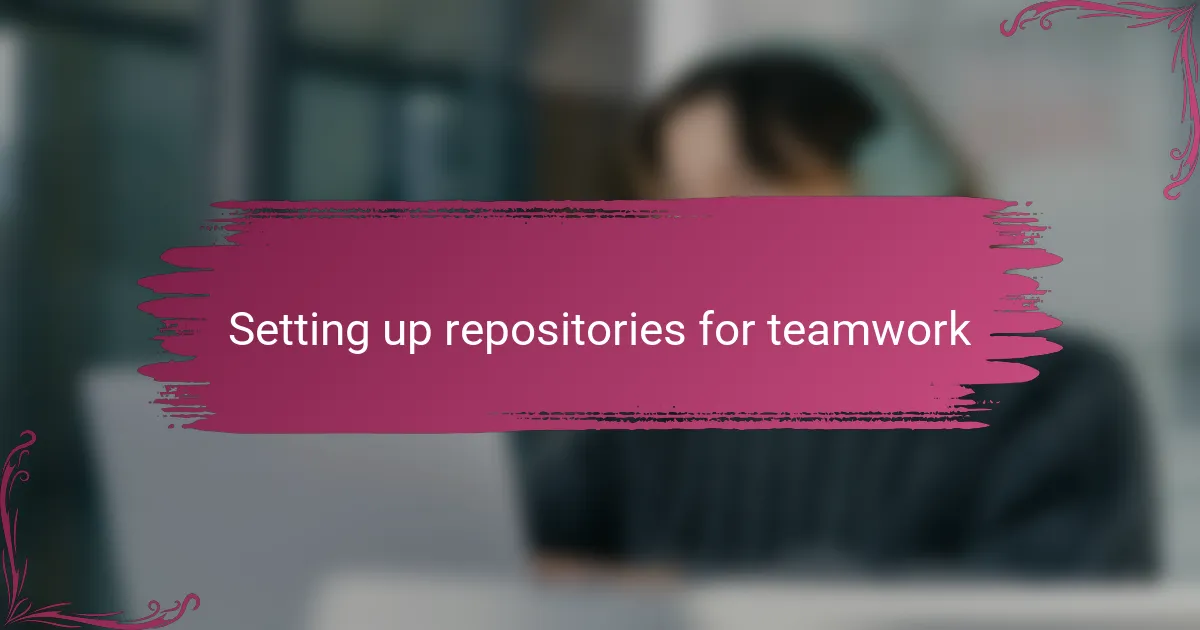
Setting up repositories for teamwork
Setting up repositories for teamwork was a step that felt both exciting and a bit daunting at first. I remember hesitating before creating the initial repository because I wasn’t sure how to structure it for multiple contributors. But once I tagged the repository as private and invited my teammates, the collaborative magic really started to happen.
One thing I quickly found invaluable was organizing the repository with clear folders and a README file that outlined what each part was for. Have you ever jumped into a project only to find yourself lost in directories with no clue where to start? Taking the time upfront to set these conventions saved us from confusion down the road.
Another key insight was linking project boards and issue tracking right from the repository setup. This kept everyone accountable and the workflow transparent, which I think is vital when many people are juggling different tasks. It made the repo feel less like just a code dump and more like a living, breathing project hub.

Managing code versions and branches
Managing code versions became a game-changer for me once I embraced branching fully. I used to hesitate before making big changes, fearing I’d mess up the main project, but creating branches gave me a playground to test ideas without worry. Have you ever felt stuck because you didn’t want to break things? Branches freed me from that fear.
Merging branches initially seemed intimidating, especially when conflicts popped up unexpectedly. But with practice, I learned that resolving those conflicts is just part of keeping the project healthy and tidy. Each merge felt like completing a puzzle, and it was satisfying to watch different contributions come together smoothly.
Handling versions also taught me the value of committing often with clear messages. I recall one project where detailed commit logs saved the day when tracking down a tricky bug introduced weeks earlier. Those small notes became a personal diary of the code’s evolution, which made collaboration feel less chaotic and more like a shared story.
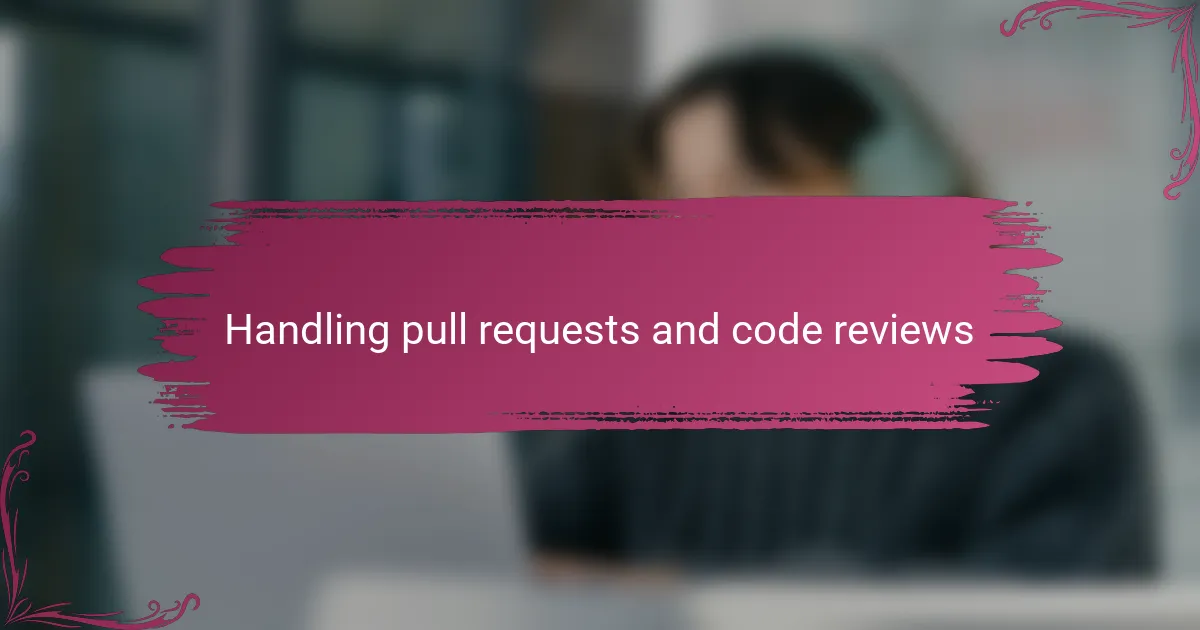
Handling pull requests and code reviews
Pull requests quickly became my trusted tool for collaboration. Have you ever felt anxious about whether your code changes are up to the team’s standards? Opening a pull request gave me a structured way to invite feedback, turning what could be a nerve-wracking moment into a constructive dialogue. I appreciated how teammates could leave comments directly on specific lines, making their suggestions clear and actionable.
Code reviews on GitHub felt less like a chore and more like a learning experience. Early on, I remember feeling defensive when someone questioned my approach, but over time, I saw reviews as opportunities to improve my skills and catch potential issues before they hit production. This mindset shift made the collaboration smoother and more enjoyable because I was genuinely curious about others’ perspectives.
Handling pull requests also meant dealing with merge conflicts, which initially stressed me out. But I realized that these conflicts weren’t roadblocks—they were signs that the team was actively shaping the code together. Each resolved conflict taught me more about the codebase and made me feel more confident in coordinating complex changes without stepping on anyone’s toes.
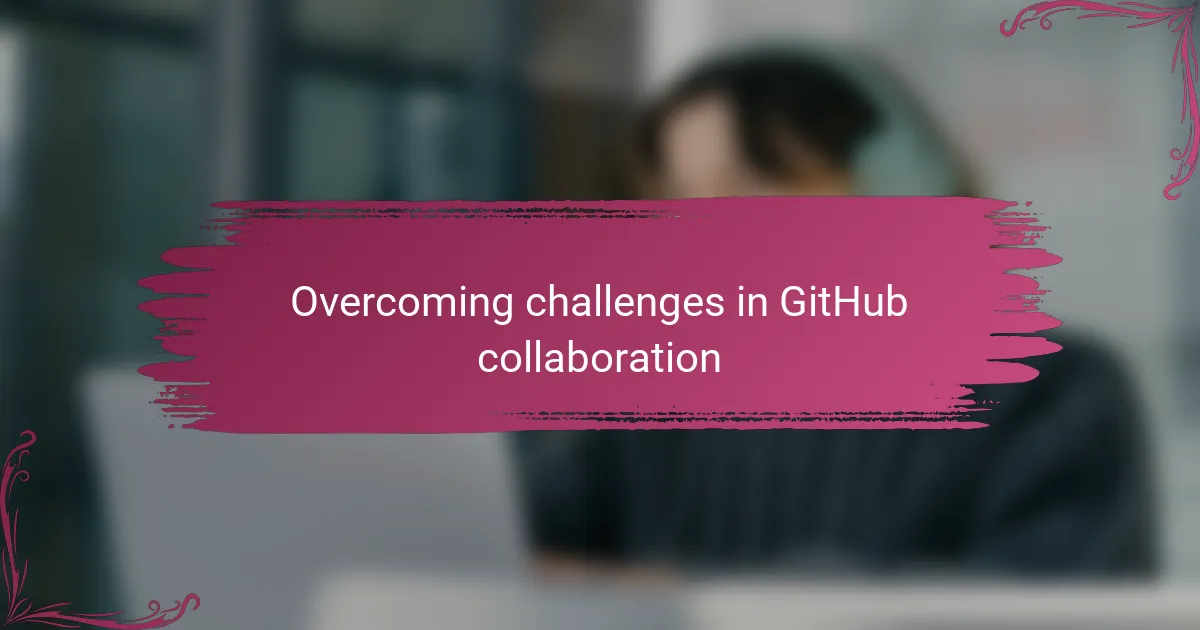
Overcoming challenges in GitHub collaboration
Dealing with challenges in GitHub collaboration was a real learning curve for me. Have you ever faced the frustration of merge conflicts that seem impossible to resolve? I used to dread those moments, but I found that breaking down conflicts line by line and communicating openly with my teammates turned those obstacles into opportunities for deeper understanding.
Sometimes, coordinating work across different time zones felt like trying to catch a moving target. I learned that setting clear expectations and using GitHub’s issue tracker to assign tasks helped keep everyone aligned, even when we couldn’t chat in real time. It made me realize that successful collaboration isn’t just about the code—it’s about building trust and keeping communication fluid.
One piece of advice I wish I’d taken sooner is to establish collaboration guidelines early on. Things like agreeing on commit message styles or branch naming conventions may seem trivial, but they saved us from unnecessary confusion later. When everyone’s on the same page, the development process flows much more smoothly—and that peace of mind is priceless.
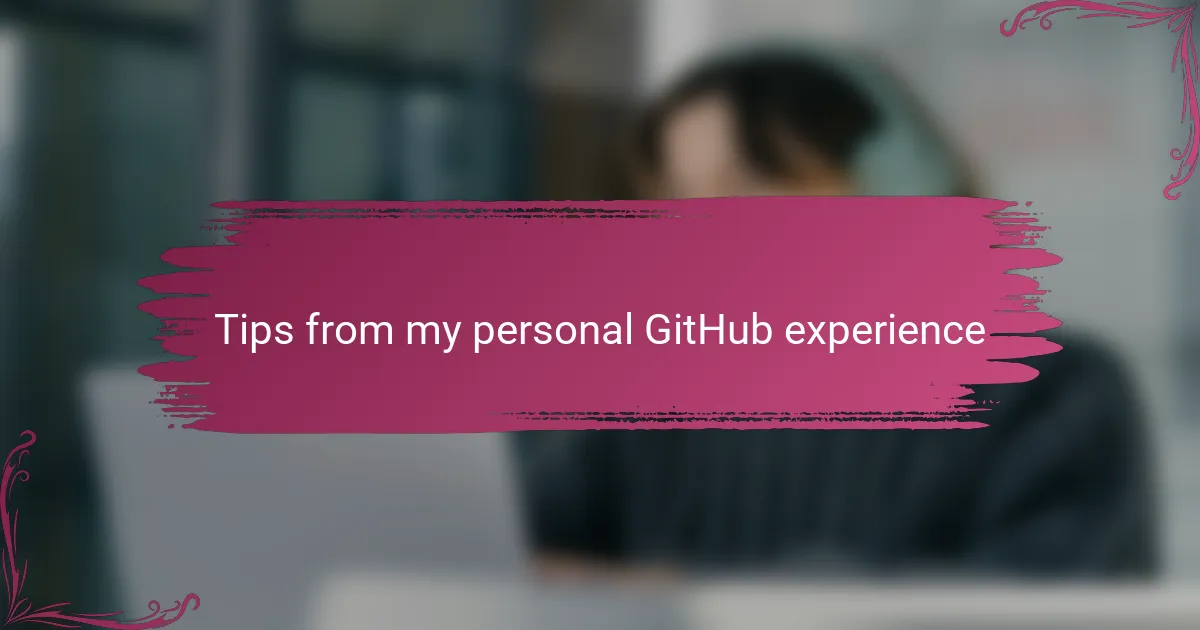
Tips from my personal GitHub experience
One tip that really stuck with me was to treat every pull request as a chance for open dialogue rather than just a gatekeeper for merging code. Have you ever felt hesitant to ask questions during a review? I found that embracing curiosity and inviting feedback made the process less intimidating and actually boosted team morale.
I also learned the hard way that keeping branches focused and short-lived makes collaboration smoother. Early on, I was guilty of letting branches linger too long, which caused confusing merge conflicts. Now, I try to merge or close branches quickly, helping to keep the codebase clean and everyone’s work in sync.
Another practical takeaway was documenting processes in the repository itself. Adding clear contribution guidelines saved me and my teammates from repeated questions and misunderstandings. It’s amazing how a little upfront effort in writing can prevent so much back-and-forth later on.